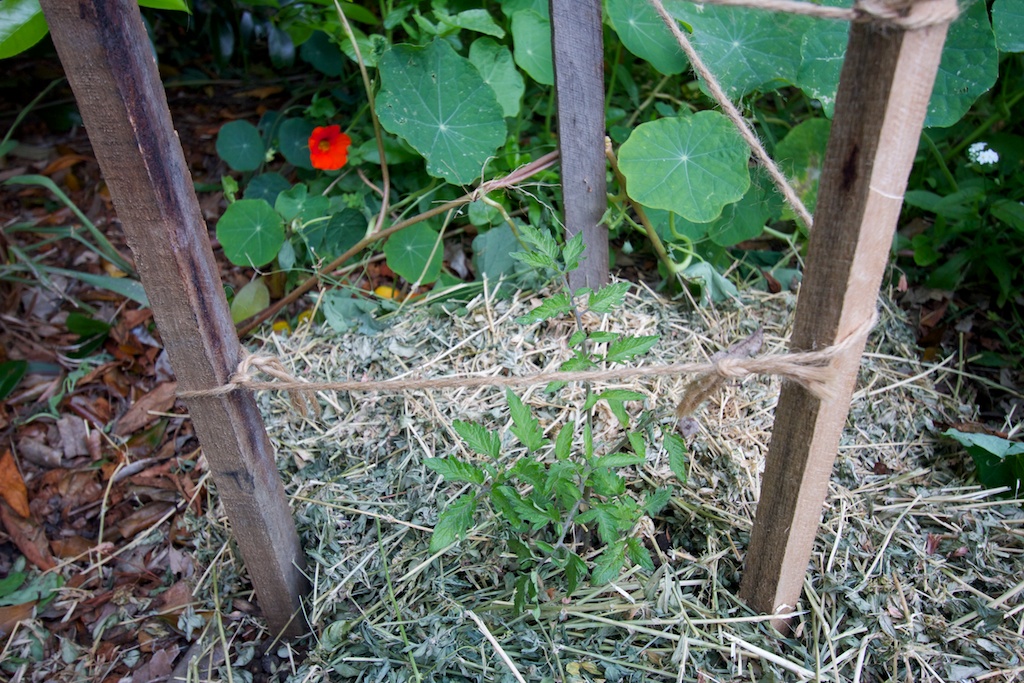Mulches and mulching
2013-11-06T06:29:36+11:00
As the weather warms up and before soils dry out, organic gardeners are laying mulch. But why do we mulch and what can we use?
Mulch is an essential element in an organic garden, and if you haven’t done it already, you need to get your mulch down as soon as possible. Mulch is simply a layer of natural material, placed on the soil surface, that conserves moisture, protects and adds nutrients to the topsoil, and guards it against extremes of climate.
Mulch will also keep vegetable and herb leaves clean by preventing them from trailing in the dirt. Shade provided by mulch lessens evaporation, and reduces the need for watering in summer while keeping the soil cool so that earthworms and other micro-organisms remain active near the surface. Mulch helps to prevent the growth of weeds and reduces the need for cultivation, because it prevents soil crusts from forming. It also breaks the velocity of water droplets and increases the openness of the soil surface, allowing water to enter easily, so reducing run-off. As mulch breaks down it adds organic material to the soil, improving the texture and making nutrients available.
Mulching choices
The choice of mulch will depend on what is available — possibilities include cut grass, hay, straw, shredded papers, seaweed, lakeweed, leaves, pea straw, lucerne hay, crop residues like sugar cane, woodchips, spent mushroom compost and cocoa hulls. Always try to buy certified organic if you can, or at least ask where it’s come from and if weedicides were used in growing it (see below).
If using shredded papers, straw or woodchips, nitrogen may need to be added (in the form of animal manure or blood and bone) because these mulches take nitrogen from the soil as they break down. Hay may contain weed seed that will sprout and cause problems.
Whatever mulch you use, make sure it is open enough for water to filter through to the soil below and be sure to lay the mulch after heavy rain or water the soil well first. As a rule of thumb, the more open and fibrous the mulch, the thicker it can be. So lucerne hay can be 10cm thick, but sugarcane residue shouldn’t be more than about 3 cm. Tease the mulch out and fluff it up as you spread it around and always leave a gap around tree trunks to avoid collar rot and other fungal problems. In fire prone areas or to fit with a particular design, inorganic mulches such as river stones, crushed rock or scoria can be used, this is especially important close to the house. While these won’t add to the nutrient levels of the soil they will still provide shade, prevent weeds and lessen water loss. In fire prone areas, if your vegie garden and fruit trees are away from the house, I would still use an organic mulch that will break down and add nutrients to the soil.
Maintaining your mulch layers
Every now and then, pull back the mulch and check that the soil below is damp so you know the rain or water from your hose is making it through the mulch. My favourite mulches for my food plants are lucerne hay, pea straw and sugarcane residue.
Don’t use
- Woodchips from treated timbers, the chemicals used to treat the timber can be toxic both to you and worms and other micro-fauna.
- Hay or straw cut from paddocks that have been sprayed with broadleaf herbicides, the herbicide often stays active in the straw for many months and will kill any plants you try to grow.
- Carpet or carpet underfelt, they are treated with toxic chemicals to retard fire and kill pests.
- Plastic sheeting or weed matt, because it kills the microflora underneath and prevents water from getting through.






